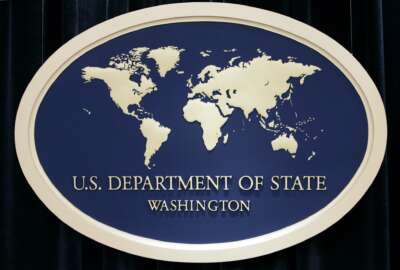Veronica Hinton, the principal director for civilian personnel policy with the Department of Defense, said her office is consolidating databases and moving the Pentagon’s HR system to the cloud.
Modernizing HR Policies at DoD
If we don’t solve our performance around hiring, then anything else we do loses focuses. We’ve stood up a hiring improvement working group and we want to look at not just the timeliness of hiring, which is very important because we want to be able to compete, find talent and get them in quickly, but we also want to look at quality. There is a point where you can go too fast and not get the right type of people.
Veronica Hinton
Principal Director for Civilian Personnel Policy, Department of Defense
We have 60-plus personnel systems in our department alone. Sixty is too many. One is not the right answer. There is an answer somewhere in between that. A handful of the most effective systems probably meets the majority of the needs of our department. From a strategic outlook of where we are trying to go, that’s what we want to get to.
Veronica Hinton
Principal Director for Civilian Personnel Policy, Department of Defense
In our HR IT environment, we had six different databases and through this initiative we are bringing everything together into one enterprise tool solution. In order to do that, we’ve looked at over 200 major business processes and we’ve been able to scale that back to 40. We had commonality in our IT system and our tools across our major military departments and defense components. Now we will have one system, one database and we are all talking the same processes for these core capabilities
Veronica Hinton
Principal Director for Civilian Personnel Policy, Department of Defense
The General Schedule system turned 70 years old this year. In many ways, it looks the same as it did in 1949 when Congress passed the Classification Act of 1949.
In other ways, the federal personnel system is like that mess of wires behind your computer that you know are important but aren’t sure where they go and why they are there.
The Defense Department is trying to untangle their convoluted, inefficient and frustrating tangled mess of a personnel system by focusing on specific areas like decreasing the time to hire and by addressing enterprisewide challenges like data standards.
Veronica Hinton, the principal director for civilian personnel policy with the Department of Defense, said the Pentagon’s efforts over the last year is putting them on the cusp of a modernized, transformed human resources and personnel system.
“We are looking at ways to modernize processes, streamline regulations, think about how we can leverage new technology and business analytics into our domain,” Hinton said on the Transforming Federal HR Processes discussion sponsored by Cornerstone OnDemand. “There is a vast recognition across the government space that we need to change what we are doing through a variety of different lenses. And then we need to think about how we need to introduce machine learning and artificial intelligence to the HR community so we aren’t compliance focused and we are outcome focused. We can let the machines do the things we do now which is that check-the-box, risk-type avoidance work that we do.”
For DoD this means improving around three specific lines of effort:
- Management improvement—Hinton said hiring and performance management underpin all other initiatives and if these areas aren’t improved, transformation will be much more difficult.
- HR reforms—Hinton said the Pentagon is looking at the opportunities to change, streamline, simplify and standardize DoD’s regulatory, policy and service delivery that supports human resources efforts.
- IT tools—To make the best use of the all the data it collects, DoD wants to harness this information to make better decisions and get employees out of the mundane and transactional HR processes.
“Any forum that you attend, you hear people talk about human capital management, the conversations are around how can we compete, how can we change what was intended to be a monolithic systems, our Title V, competitive service, to what now has probably more exceptions than the norm? What are the opportunities to modernize with the support of Congress through statute change or where are there opportunities for administrative change by partnering with OPM to look at where are there opportunities to delegate authorities,” Hinton said. “And then individually, each agency is looking for ways within their own authorities and discretion to be able to achieve different types of strategic and modern outcomes.”
While all of these efforts are happening in parallel, Hinton said fixing the hiring and performance management processes has been ongoing for the last 18 months.
Time to hire and quality matter
DoD has been reviewing its hiring process to ensure timeliness and quality of candidates. Hinton said an intraagency working group is looking at how to standardize the hiring process across DoD.
“One of the things we are trying to do is bring some standardization around what those different steps are. Once we do that, we can have a better understanding of where are those pain points or bottlenecks that are consistent across the department,” she said. “Is it administrative or a policy? Is it a training issue for our HR professionals? Is it training or education for hiring managers so they can be full partners in the process?”
At the same time, the working group is analyzing the best ways to ensure the quality of the candidates meet DoD’s needs.
Hinton said her office is bringing back a quality survey for hiring managers to baseline their expectations and better understand the challenges and frustrations.
Part of the challenge for DoD with the hiring process are the 23 authorities to fill critical needs Congress granted them over the last decade. Hinton said each authority is a little different and have been implemented in assorted ways.
“Part of our initiative is how do we streamline that? How do we make the process easier so if you are a hiring manager and you have 10 different authorities available to you, how do you know that, how do you know which one to use and which one is most effective?” she said. “We are looking at ways that we can make that more digestible for the hiring managers, for the HR community so we can use them more efficiently in the department.”
Hinton said without a doubt the direct hire authorities are effective in bringing in unique talents more quickly. She said the Air Force depots have reduced their time to hire for certain positions to 40 days from more than 100, while the Navy shipyards has been a 28% reduction in time hire.
Hinton said across the department, the average reduction in time to hire is 20% compared to traditional hiring methods.
“We are looking at where are there opportunities statutorily with Congress to be able to start to streamline those,” she said. “In those things that we can control administratively, where are there opportunities for us to streamline like authorities and where is there opportunity to highlight those that are most effective.”
Data standardization drives technology improvements
Data holds the key to many of these improvements. Through the improved standardization, collection and analysis, DoD can focus its HR modernization efforts more precisely.
Hinton said part of the DoD’s transformation is moving away from manual processes to collect, input and analyze data. She said the development of a new HR technology system that will use software-as-a-service is underway.
“As part of that migration, it has really driven and supported is our thoughts around changing our processes,” she said. “Our HR IT environment had six databases and through this initiative we are bringing everyone together under one enterprise tool solution. We looked at over 200 major business processes and have been able to scale that back to 40. We had commonality in our IT systems and tools across our major military departments and defense components. Now we will have one system, one database and we will all be talking about the same processes for these core capabilities.”
Along with reducing the number of HR databases and businesses processes, DoD also cut down the number of data elements to 650 from 1,400.
“It was a significant amount of work, but the reality is if we want to use data to drive decisions in our business domains we have to have a handle on what it is, we have to speak a common language and we have to have some common standards,” Hinton said. “This IT modernization effort is really leading us down this path.”
Hinton said these IT modernization and data standardization efforts are setting DoD up for the future where artificial intelligence, machine learning and robotics process automation will play a bigger role in the HR processes.
“Planning and data are two primary focus areas of where we are trying to drive modernization,” she said. “It goes hand-in-hand in everything we think about in the human capital community in the department.”
Listen to the full show:
Copyright
© 2024 Federal News Network. All rights reserved. This website is not intended for users located within the European Economic Area.








